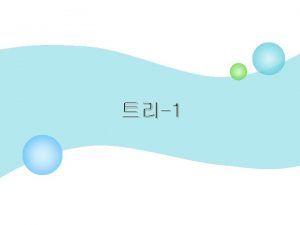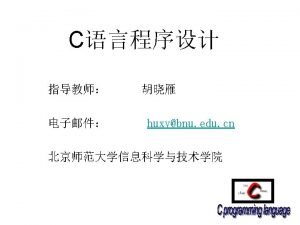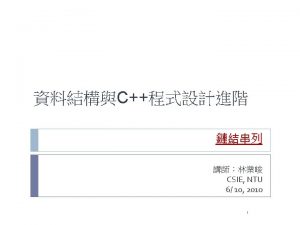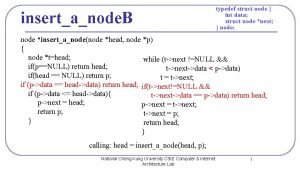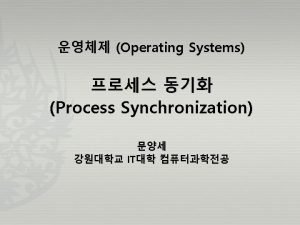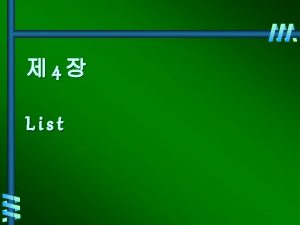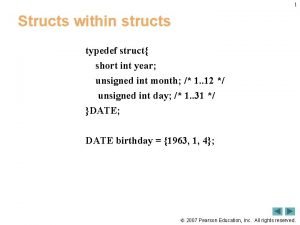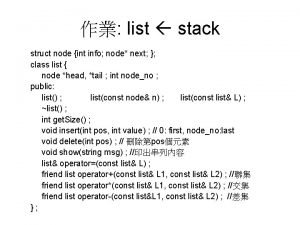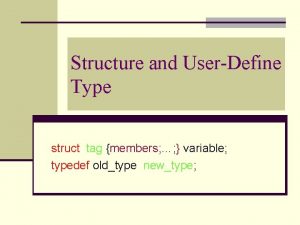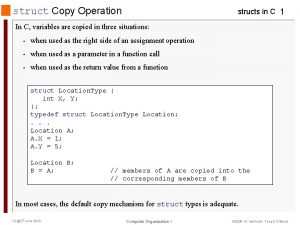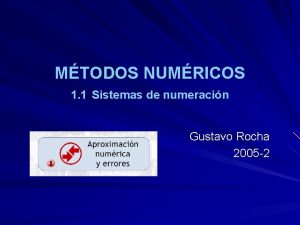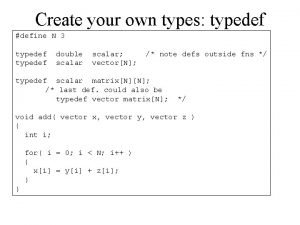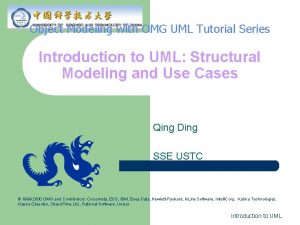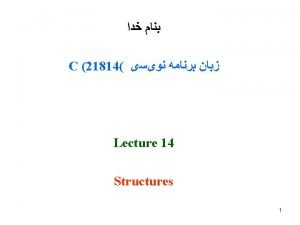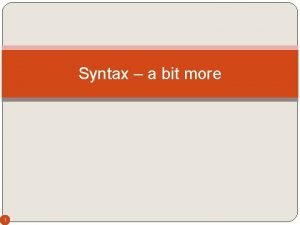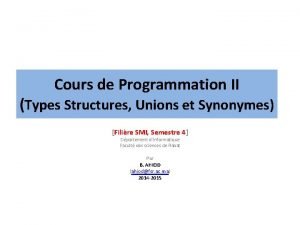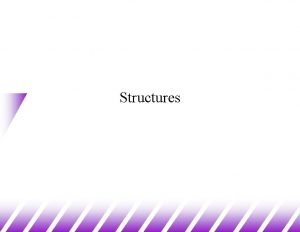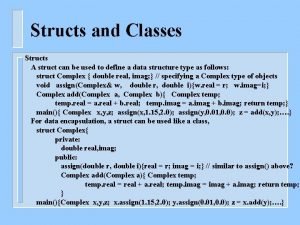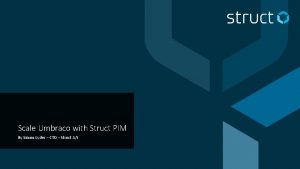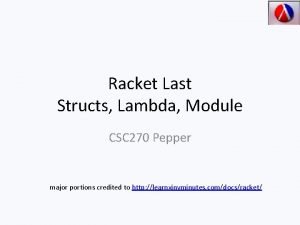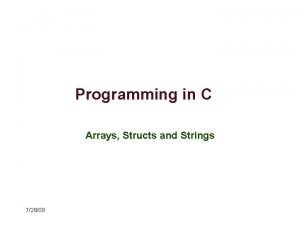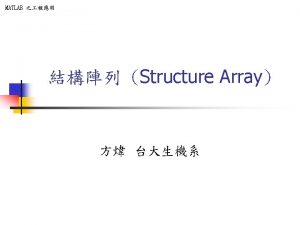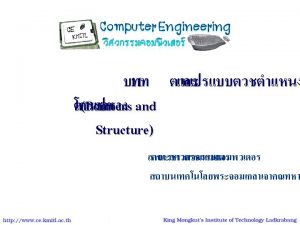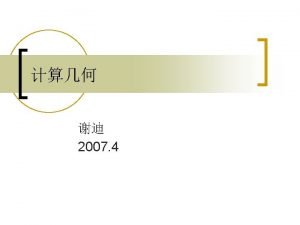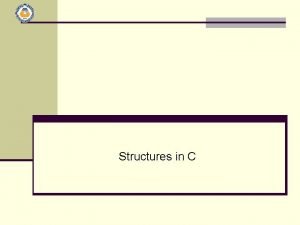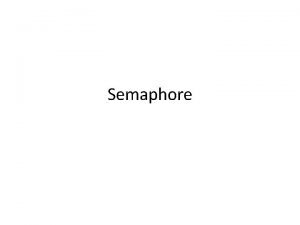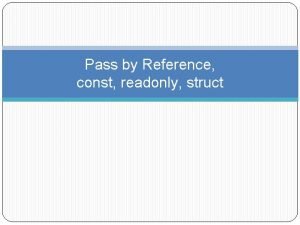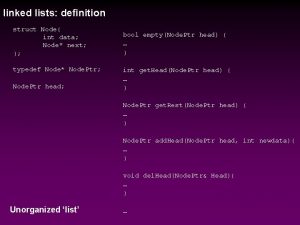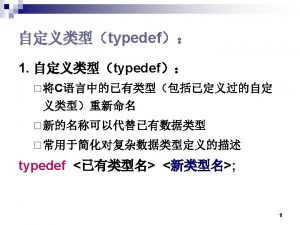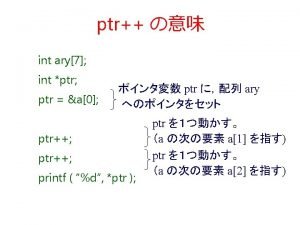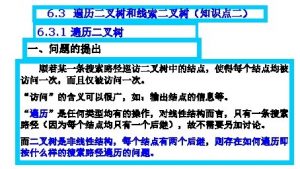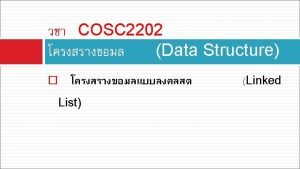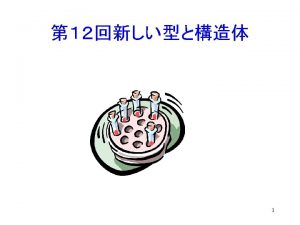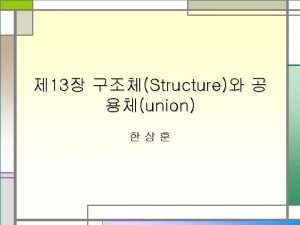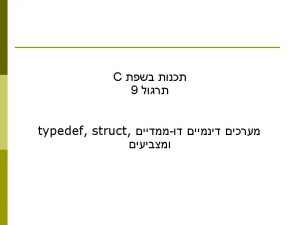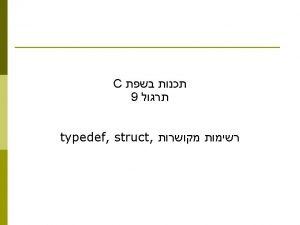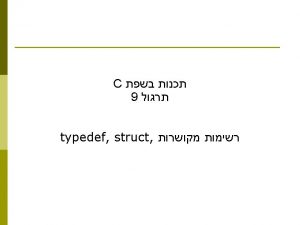define STACKINITSIZE 100 define STACKINCREMENT 10 typedef struct


























































- Slides: 58











– 顺序栈的存储 # define STACK_INIT_SIZE 100; //存储空间初始分配量 # define STACKINCREMENT 10; // 存储空间分配增量 typedef struct { SElem. Type * base; //在栈构造之 前和销毁之后, base的值为NULL SElem. Type * top; // 栈顶指针 Int stacksize; //当前已分配的 存储空间,以元素为单位 }Sq. Stack; 数据结构 Sq. Stacksize top base SElem. Type


4. 栈的主要算法 (1) 构造空顺序栈算法 Status Init. Stack ( Sq. Stack &S ) { // 构造一个空栈 S S. base = ( SElem. Type * ) malloc ( STACK_INIT_SIZE * sizeof ( SElem. Type ) ); if ( ! S. base ) exit ( OVERFLOW ); // 为栈分配存储空间 失败 S. top = S. base; // 令栈顶指针 = 栈底指针 S. stacksize = STACK_INIT_SIZE; // 设置栈的当前可使 用的最大容量 return OK; } // Init. Stack 数据结构



(4) 将元素压入顺序栈算法 Status Push ( Sq. Stack &S, SElem. Type e ) { // 将元素 e 插入到栈 S 中,成为新的栈顶元素 if ( S. top - S. base > S. stacksize ) { // 如果栈满,则追加存储空间 S. base = ( SElem. Type * ) realloc ( S. base, ( S. stacksixe + STACKINCREMENT* sizeof ( SElem. Type ) ); if ( ! S. base ) exit ( OVERFLOW ); // 追加存储空间失败 S. top = S. base + S. stacksize; // 修改栈顶指针 S. stacksize += STACKINCREMENT; // 修改当前栈的存储空间 } *S. top ++= e; // 先将 e 送入栈顶,然后将栈顶指针加 1 return OK; } // Push 数据结构


















队列的进队和出队示例 A front rear 空队列 A B front rear A进队 A B C D front rear B进队 front rear C, D进队 B C D front rear A退队 C D front rear B退队 C D E F G front rear E, F, G进队 C D E F G front rear 数据结构 H进队, 溢出











队列的链式存储结构 Typedef struct QNode{ QElem. Type data; struct Qnode *next; }Qnond, *Queue. Ptr; Typedef struct{ Queue. Ptr front; Queue. Ptr rear; }Link. Queue; Queue. Ptr 数据结构 QNode data next 单链队列的结点类型 Link. Queue front rear Link. Queue类型


空队列 Q. front Q. rear Q. front ∧ 元素X入队列 X Q. rear Q. front ∧ 元素Y入队列 X Y ∧ Q. rear Q. front Q. rear 元素X出队列 数据结构




front rear 队空:front==rear 队满:front==rear J 5 J 4 4 5 0 J 6 3 2 1 front 4 5 0 3 2 1 rear 出队 6 J , 5 J , J 4 J 7, J 8 , J 9入 队 J 5 J 4 4 5 0 J 6 3 2 1 J 7 J 9 初始状态 解决方案: 1. 另外设一个标志以区别队空、队满 2. 少用一个元素空间: 队空:front==rear 队满:(rear+1)%M==front 数据结构 front rear J 8



课堂练习 (2) void Demo 2( Seq. Stack *S, int m) {// 设Data. Type 为int 型 Seq. Stack T; int i; Init. Stack (&T); while (! Stack. Empty( S)) if(( i=Pop(S)) !=m) Push( &T, i); while (! Stack. Empty( &T)) { i=Pop(&T); Push(S, i); } } 数据结构



(1) Seq. Stack S 1, S 2, tmp; Data. Type x; . . . //假设栈tmp和S 2已做过初始化 while ( ! Stack. Empty (&S 1)) { x=Pop(&S 1) ; Push(&tmp, x); } while ( ! Stack. Empty (&tmp) ) { x=Pop( &tmp); Push( &S 1, x); Push( &S 2, x); } 数据结构

(2)void Demo 3( Cir. Queue *Q) {// 设Data. Type 为int 型 int x; Seq. Stack S; Init. Stack( &S); while (! Queue. Empty( Q )) { x=De. Queue( Q); Push( &S, x); } while (! Stack. Empty( &s)) { x=Pop(&S); En. Queue( Q, x ); } }// Demo 3 数据结构 (3) Cir. Queue Q 1, Q 2; // 设 Data. Type 为int 型 int x, i , m = 0; . . . // 设Q 1已有内容, Q 2已初始化过 while ( ! Queue. Empty( &Q 1) ) { x=De. Queue( &Q 1 ) ; En. Queue(&Q 2, x); m++; } for (i=0; i< m; i++) { x=De. Queue(&Q 2) ; En. Queue( &Q 1, x) ; En. Queue( &Q 2, x); }
 Typedef struct tree int info struct *left
Typedef struct tree int info struct *left Typedef struct tree
Typedef struct tree Typedef struct tree int info struct *left
Typedef struct tree int info struct *left 100 100 100 100 100
100 100 100 100 100 Typedef struct c
Typedef struct c Typedef union
Typedef union Typedef struct in c
Typedef struct in c Typedef struct node
Typedef struct node Typedef struct node int value
Typedef struct node int value Typedef struct
Typedef struct Typedef struct node
Typedef struct node Typedef struct node
Typedef struct node 생능출판사 교수 아이디
생능출판사 교수 아이디 Typedef in structure
Typedef in structure Typedef struct tree int info
Typedef struct tree int info Typedef struct tag
Typedef struct tag Struct node int data struct node* next
Struct node int data struct node* next C deep copy struct
C deep copy struct 70'in 20'si
70'in 20'si 200+200+100+100
200+200+100+100 Box plot gcse
Box plot gcse Malloc lab 100/100
Malloc lab 100/100 1453-1337
1453-1337 100+100=200
100+100=200 100 iops/gb and 100,000 iops per volume oci
100 iops/gb and 100,000 iops per volume oci 100 200 300
100 200 300 C/100=f-32/180=k-273/100
C/100=f-32/180=k-273/100 What's 100 + 100
What's 100 + 100 200 200 300
200 200 300 Números romanos todos
Números romanos todos 100 + 200 300
100 + 200 300 Typedef int
Typedef int Typedef
Typedef Typedef float
Typedef float Graphnn
Graphnn Uml omg
Uml omg C typedef enum
C typedef enum Typedef in structure
Typedef in structure Forward declaration of typedef
Forward declaration of typedef Typedef
Typedef Struct meaning root
Struct meaning root Declare a struct
Declare a struct What is the difference between class and struct
What is the difference between class and struct Struct dirent
Struct dirent Struct file_operations
Struct file_operations Umbraco pim
Umbraco pim Lambda function racket
Lambda function racket Struct
Struct Matlab getfield
Matlab getfield C stat struct
C stat struct Struct em c
Struct em c Struct in c++
Struct in c++ Struct student
Struct student Struct point int x y
Struct point int x y Main() struct char name 25 charlanguage 10
Main() struct char name 25 charlanguage 10 Sem_undo
Sem_undo Readonly struct
Readonly struct Struct node int data
Struct node int data

